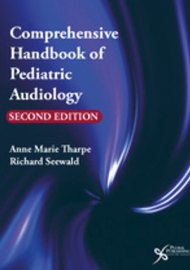The authors of the Comprehensive Handbook of Pediatric Audiology, as stated themselves, have striven to pen an exhaustive and academic textbook on audiology. In my view, it certainly meets their aim of being at a masters or doctoral level.
However, I must remain reserved regards their aim of being ‘comprehensive’ as, unlike other books in this category of ‘handbooks of paediatrics’, it does not cover two emerging and important areas; these being paediatric balance assessment and paediatric tinnitus management. It does cover the balance system anatomically and physiologically in great detail; however, this is of less clinical value.
Having mentioned the above, this book does have an exceptionally good international perspective. For example, in goes into minute details on setting up a newborn hearing screening programme which, while less relevant to the typical NHS audiologist, may be essential to clinicians in another country where the NHSP is not established.
The book provides some excellent new research and, therefore, insight in to the routine clinical work we perform, such as with otitis media effusion and dealing with noise exposure concerns in teenagers, which has improved my practice and benefited my patients.
So, would this be my first choice ‘go to’ audiological handbook? If it was for the purpose of preparing a lecture, yes: if it was as a clinical manual, I might be reluctant. So, in summary, I would give the Comprehensive Handbook of Pediatric Audiology 5/5 for its thorough broad research and enriching my audiology knowledge, but 4/5 for clinical relevance.




